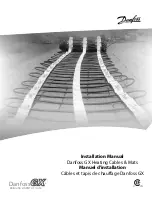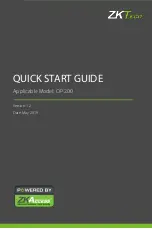
22
TP12KSC-DX
July 2018-A
16. Testing & Bleeding System
In this step A, there is no load on the lift.
Cycle up and down must be with interval rest of 2 mins.
A. Without a load, actuate the power unit and hold the button until both carriages lift off the locks and
carefully loosen the bleeding screw at top end of the Off side cylinder and allow the trapped air to
escape. Once trapped air has escaped, retighten bleed screw on top of cylinder.
THE AIR IN THE CYLINDER IS UNDER PRESSURE. PROTECT YOUR EYES AND COVER
THE END OF THE CYLINDER WITH A RAG BECAUSE OIL MAY SPRAY OUT OF THE
CYLINDERS.
B. Repeat bleeding process for the Main side cylinder.
C. The latches should click close together as the lift is being raised. If not, adjust cables for proper
equalization and tightness.
D. When the carriages are lowered onto the locks, the Latch Release Handle should NOT be capable
of being pulled down. Prior to lowering the carriages, always raise up enough to free the latches,
then pull down the latch release handle to unlock the carriages to lower. Ensure both latches
properly release.
E. The first time a vehicle is placed on the lift, raise it no higher than three feet. Lower the vehicle onto
the safety latches. Raise the lift a few inches and pull latch release lever then lower the vehicle to
the floor.
F. Raise the vehicle to full height and lower the carriages onto the safety latches. Lower the vehicle to
the floor.
G. After cycling the lift ten times with a vehicle on it, recheck the tightness of the anchors to at least
110 ft-lbs.
The Lift is now ready for Operation.













































